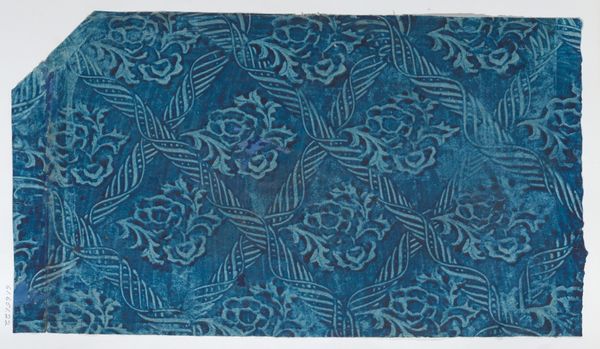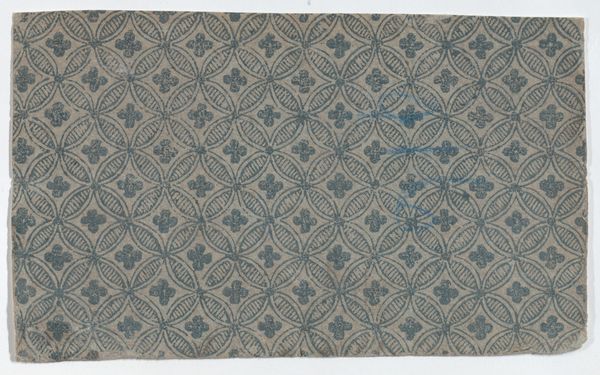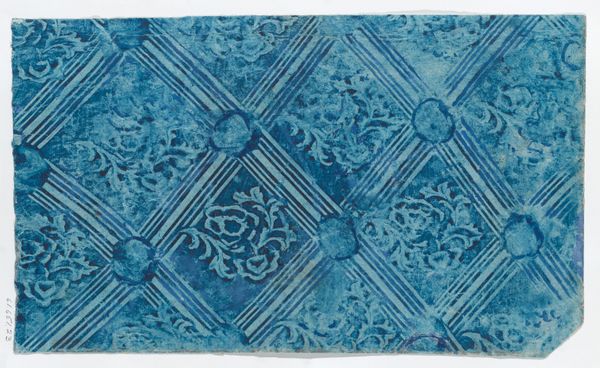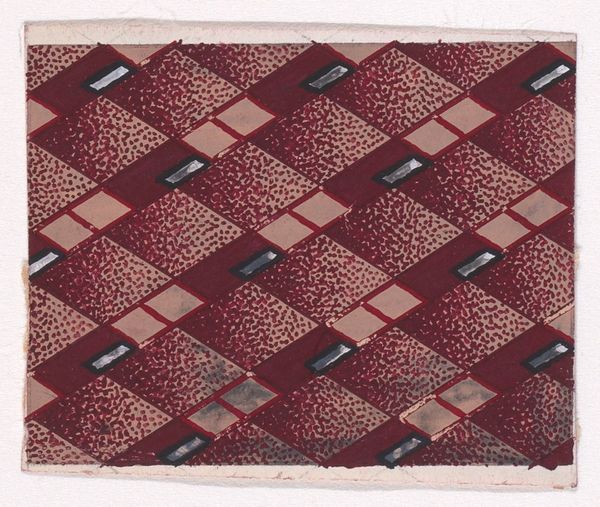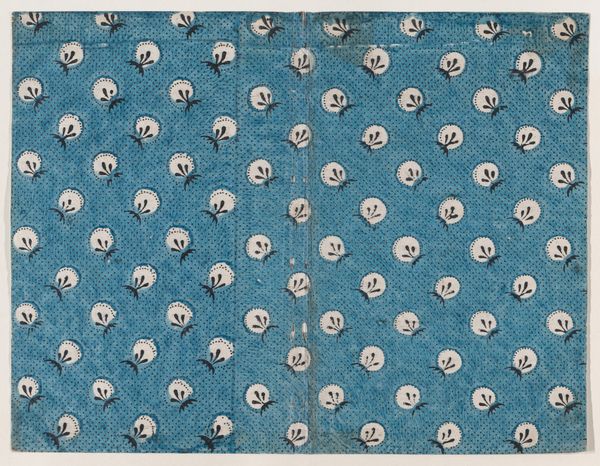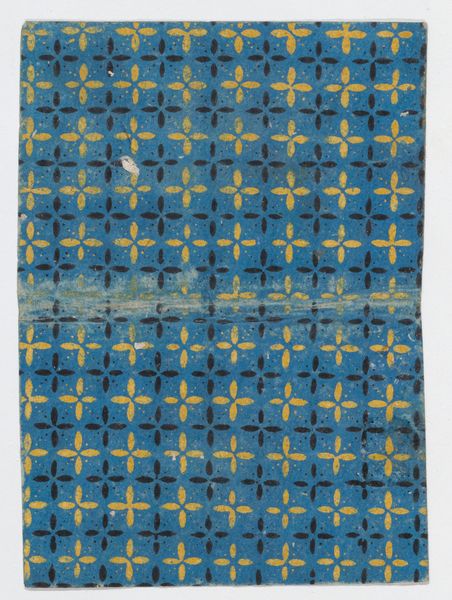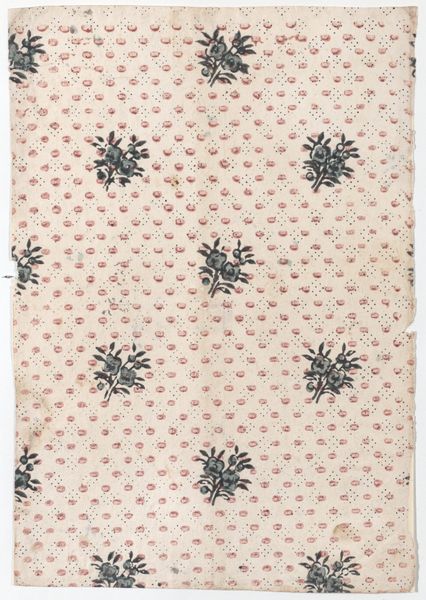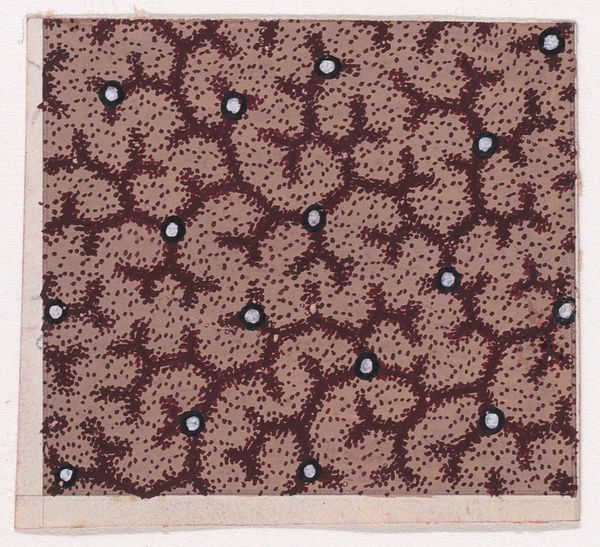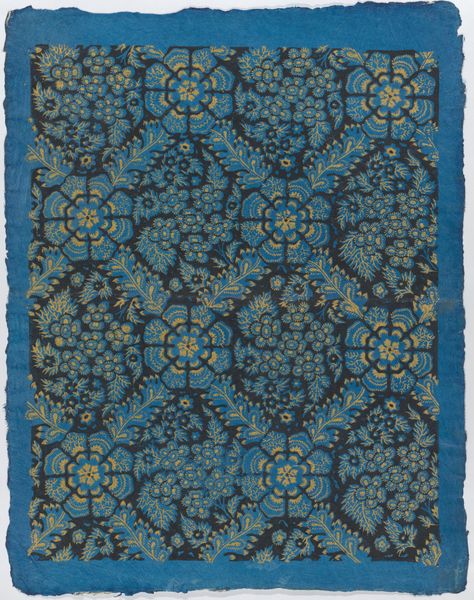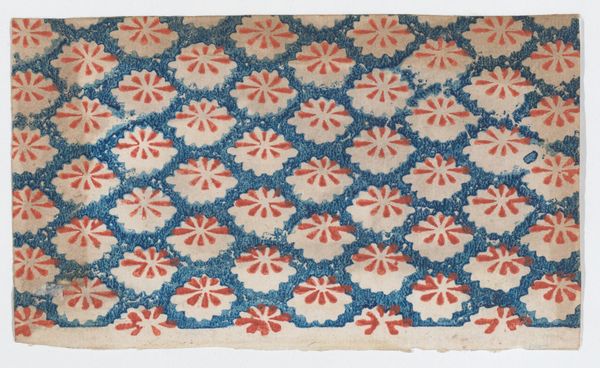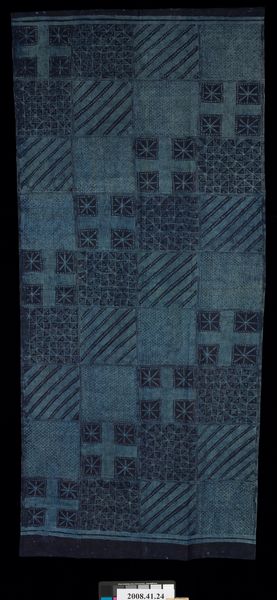
Blue paste paper with circular designs and ornamental diagonal pattern and crisscross background 1800 - 1900
0:00
0:00
drawing, print
#
drawing
# print
#
geometric
#
decorative-art
Dimensions: Sheet: 14 5/8 × 9 1/4 in. (37.2 × 23.5 cm)
Copyright: Public Domain
Curator: This is an example of blue paste paper with circular designs and ornamental diagonal patterns set against a crisscross background. Created by an anonymous artist, likely sometime between 1800 and 1900. The work is currently held at the Metropolitan Museum of Art. Editor: My immediate impression is how calming it feels. The monochromatic palette, dominated by blues, creates a sense of serenity and invites a closer look at the intricacies of the pattern. It’s quite hypnotic. Curator: It certainly is, and understanding the function of decorative paper during this era helps. Wallpaper and bookbinding weren’t simply aesthetic choices, but signified socioeconomic status. Consider how repeated motifs reinforced systems of power or cultural narratives, making these pieces reflections of the social landscape. Editor: From a formal perspective, the rhythmic repetition of the circles contrasted against the rigid grid and the fluid diagonal lines introduces visual complexity. It’s interesting how the artist used simple shapes and lines to create a dynamic yet balanced composition. Semiotically, one can view the grid as structure or order and the circles as a point of focus or perhaps escape, or even a break in that rigidity. Curator: Precisely. And who were these patterns made for? Were they empowering their owners or encoding subtle resistance to the restrictive design trends that had become symbolic of the elite? It opens fascinating questions about the negotiation of taste, class, and cultural identity. This paper is also deeply connected to labor practices and class, as decorative work for the home would have been available and fashionable for only some individuals at this time. Editor: I agree, and by deconstructing the patterns— analyzing the shapes, textures, and repetitions —we can start to extrapolate their meaning and understand how the artist's manipulation of form engages with our perception of space. Curator: Exploring the historical context and socio-political landscape surrounding its creation transforms how we approach this decorative piece. It pushes us to ask important questions. Editor: Yes, delving into its structure unveils both the artist's process and the latent possibilities for visual engagement and ideological deconstruction.
Comments
No comments
Be the first to comment and join the conversation on the ultimate creative platform.
